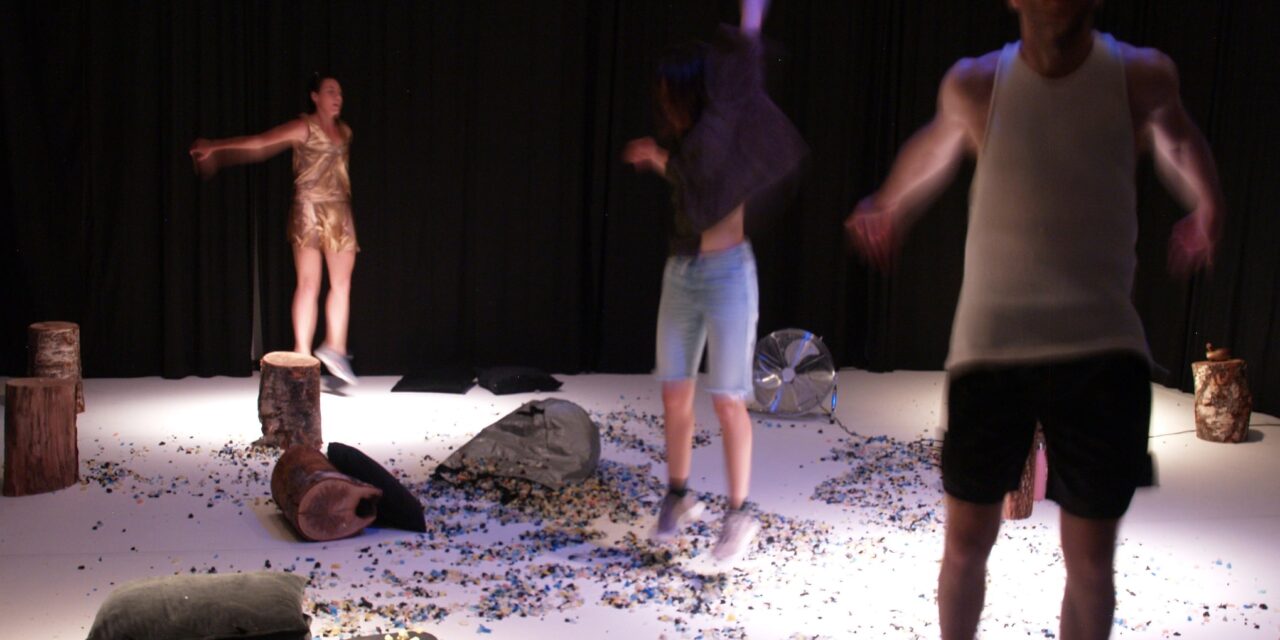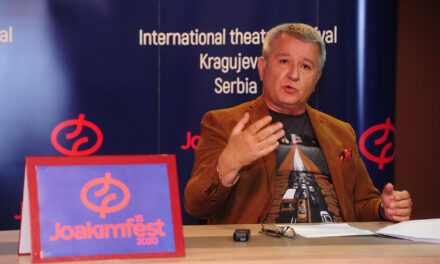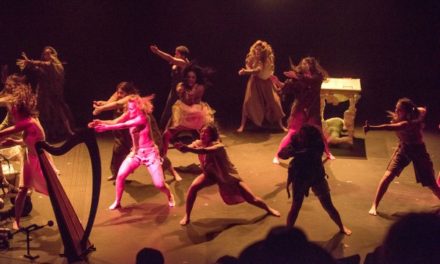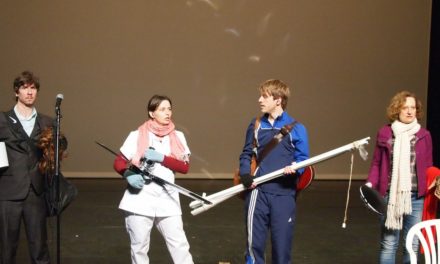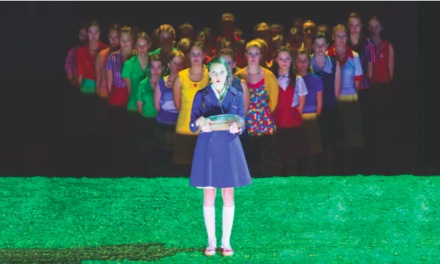Despite national and regional COVID-19 guidelines for the logistical elements of performance, audience capacity and conduct in indoor and open-air theatres, a number of independent dance festivals across Italy still manage to open to live audiences. At the same time that established and long-standing cultural organisations operate across the country, such as MilanOltre Festival (September 17th to October 11th) and RomaEuropa Festival (September 18th to November 15th), Sicily also has to offer an array of emerging performing arts festivals. Among them is Festival ConFormazioni – Festival di Danza e Linguaggi Contemporanei, a recently fοunded festival of contemporary dance curated by Giuseppe Muscarello (Artistic Director) and Danila Blasi (Managing Director).
Based in Palermo, the capital of Sicily, Festival ConFormazioni — originally planned for April 2020 but postponed due to lockdown — successfully concluded its fourth edition by staying loyal to its ever-increasing number of followers. In a familiar normality reminiscent of pre-pandemic times, the three-day program consisted of six exclusively-live performances created by established, mid-career and emerging artists as well as local and national choreographers. The invited artists were Virgilio Sieni, Roberto Zappalà, Gruppo Nanou, Francesca Sprocccati, Maria Stella Pitarresi and Giueseppe Muscarello. This edition of the festival has been the shortest and least international due to COVID-19 prevention measures. These limited the festival to the repetition of the same group of performances — at least for the first day — but still accommodated an eager audience. Hosted in the industrial, theatrically-adapted spaces of Cantieri Culturali alla Zisa and on the open square of Piazza Sant’Anna at the centre of Palermo, visitors equipped with the necessary anti-pandemic kit enlivened these empty and inactive spaces that awaited the presence of people.
The majority of the programmed solo and duet performances carry the traces of the lockdown. They all contain introspectiveness and contemplation of the available personal resources that emerged during the dark months of March and April, a period imbued with silence and imposed inactiveness. Gruppo Nanou, the collective project of Marco Valerio Amico and Rhuena Bracci, share Arsura (2020), a work-in-progress in which the artists dive into their unique choreographic language. They now seek to redefine it, 10 years after first establishing their choreographic identity rooted in the body as sound, object and light. Two extracts from Roberto Zappalà’s Liederduett (2018) are removed from their original concept and scenographic context, and arranged in the frame of Performative Speech (2020). In this rather explanatory lecture-demonstration, the renowned choreographer discusses the principles of Modem (acronym of Movimento Democratico), the training method that Zappalà created to transmit his linear and visceral choreographic language that retains the individual performer’s idiosyncrasy. Virgilio Sieni’s choreographic trademark Solo Goldberg Variations, a work that the acclaimed choreographer has been performing rigorously on an almost-yearly basis since 2003, summarises his long-term research on fluid and articulated body movement. Set to Johann Sebastian Bach’s Goldberg Variations and played live by pianist Andrea Rebaudengo, Solo Goldberg Variations is a physically and mentally demanding, structured dance improvisation that changes and deepens with every iteration by Sieni’s delightful to watch, mature body.
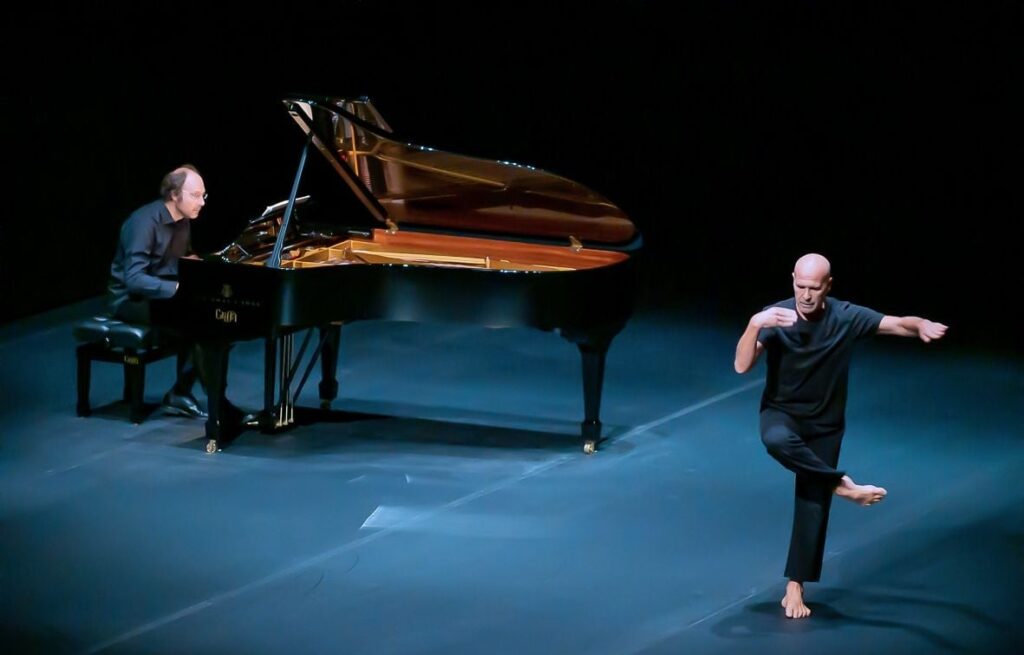
Virgilio Sieni in Solo Goldberg Variations with pianist Andrea Rebaudegno. Photo GD©Giovanni Daniotti.
This very short, eclectic preview of the Italian contemporary dance scene focused on “pure movement” is enriched by Francesca Sproccati’s performance installation EXP: Je Voudrais Commencer Par Sauter, an immersive experience for the audience to ponder on the essence of time. It is joined by Eclipse, a solo work on the dark side of the self by Maria Stella Pitarresi, a young but promising dancer and choreographer. The program is also complemented by Bacchae, a group work based on Euripides’ renowned tragedy, and devised by Giuseppe Muscarello for the historical setting of Sant’Anna square in Palermo.
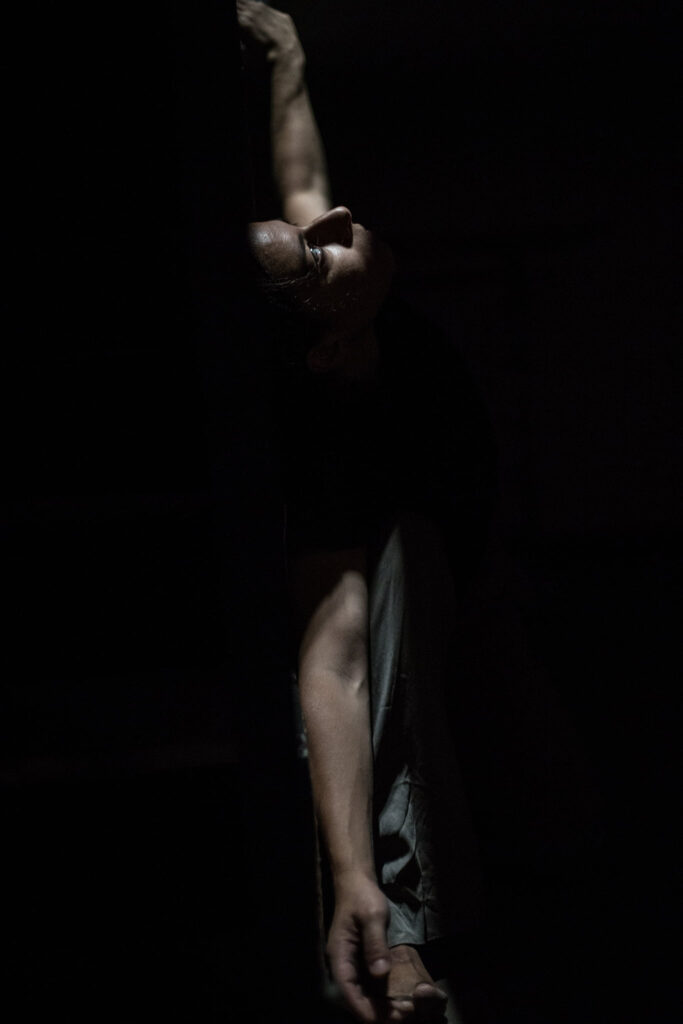
Maria Stella Pitarresi in Eclipse. Photo ©Valeria Tomasuolo.
Additional encounters during Festival ConFormazioni included the informal public gathering called The form of the Desire (La forma del Desiderio). Addressed to scholars, artists and producers, it aimed to offer reflections on the notion of desire in relation to dance. With contributions by dance historian Alessandro Pontremoli, dance critic Roberto Giambrone, artistic director of Teatro di Vetro Festival Roberta Nicolai, Danila Blasi and Virgilio Sieni, desire has been discussed through approaches as diverse as the concreteness of the form, or its processual — immaterial and changeable — expression that remains infinitely unsatisfied. Desire has been proposed as a wish that liberates the body to envision the impossible, the non-existing or the not-yet-conquered, and as an invitation to build what is absent or to discover what is invisible.
Ascending or descending along a vertical axis, and moving between the Apollonian (the spiritual) and the Dionysian (the visceral), the journey towards the conquest of desire has potential to become a political act. During this time when each individual’s kinesphere expands into the coronasphere in order to stay alert and maintain social distancing, and the body has become a synonym for infection risk and a potential carrier of the virus, performing artists and festivals have gone through hard times. The desire to organise a dance festival, and achieving it, happens at a time that many festivals are suspended or cancelled. On one hand, this empowers the community of dance artists and art workers. On the other hand, it enables communication and exchange of ideas. Furthermore, turning attention to the moving body and creating discourse through and around bodies has much to offer in everyday life and reinforces the body’s ability to adopt a political dimension.
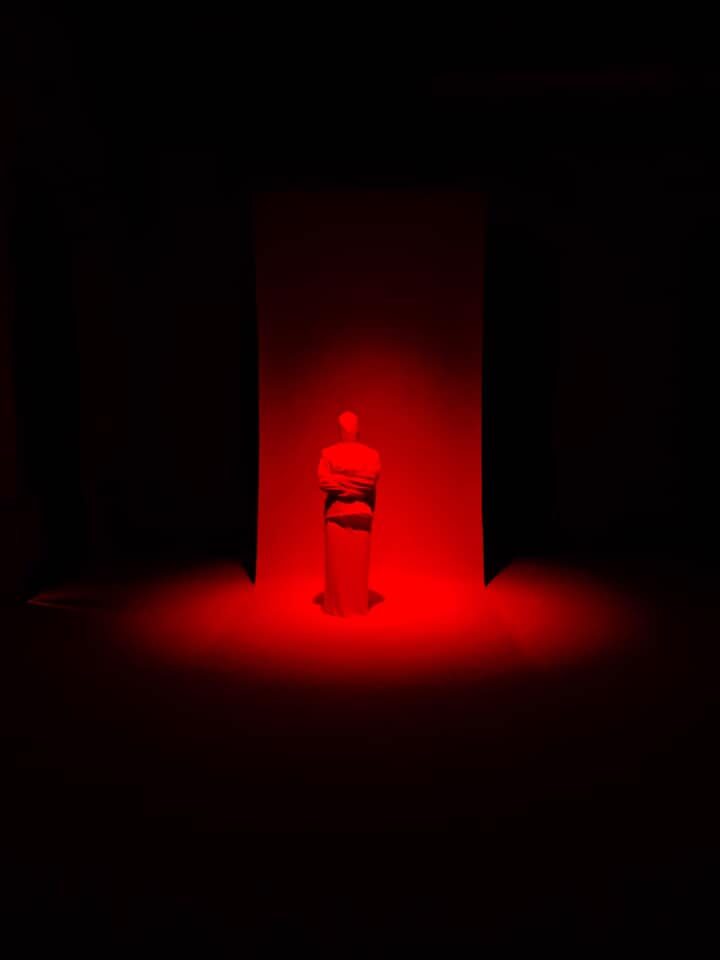
Arsura by Gruppo Nanou — Marco Valerio Amico and Rhuena Bracci. Photo ©Gruppo Nanou.
With this in mind, next on the calendar of events in Palermo was Mercurio Festival (September 25th-October 3rd), an interdisciplinary arts festival unique for its collective direction that is made exclusively by artists. Mercurio Festival is an event in evolution that embodies political ideas rooted in its experimental curatorial conception and organisational structure — artists propose other artists to be included in the future editions of the festival, creating a chain of mutual solidarity and esteem. The program included Chiara Bersani’s Cordata Panormus, Roberto Castello’s movement workshop and Kònic thtr with their audiovisual networked performance Bruma / Net. They were invited by Marco D’ Agostin, Compagnia Abbondanza/Bertoni and Turi Zinna respectively — all guest artists of the 2019 festival.
Festival ConFormazioni and Mercurio Festival offer support to artists and create movement of people and ideas in the city of Palermo. These are acts of resistance to the imminent isolation resulting from COVID-19 that need to be supported and followed in their future iterations.
Additional Credits
EXP: Je Voudrais Commencer Par Sauter. Performers: Elena Boillat, Benjamin Burger, Francesca Sproccati. Set and Sound Design: Elisa Storelli. Supported by Pro Helvetia.
Performative Speech. Performers: Filippo Domini, Fernando Roldan Ferrer, Joel Walsharm, Erik Zarcone, Roberto Zappalà.
Bacchae (Le Baccanti). Performers: Maria Stella Pitarresi, Roberta Pellegrino, Claudia Savarino, Margherita Celestino, Jessica De Masi.
Bruma / Net by Kònic thtr with Federica Aloisio, Roberto Galbo, Gianni Gebbia, Oria, Alain Baumann, Rosa Sanchez.
This post was written by the author in their personal capacity.The opinions expressed in this article are the author’s own and do not reflect the view of The Theatre Times, their staff or collaborators.
This post was written by Ariadne Mikou.
The views expressed here belong to the author and do not necessarily reflect our views and opinions.

